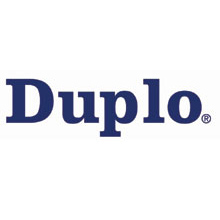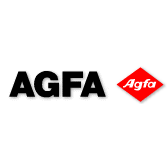
If one factor has dominated the downturn for printers, it’s been the drought in finance and credit. As a manufacturing process that demands high capital equipment investment, the lack of credit puts the squeeze on a print company’s ambitions very quickly.
And there definitely has been a squeeze. According to Hagop Tchamkertenian, national manager for policy at the Printing Industries Association of Australia, the local industry has felt a constriction in credit for about two years.
“The past eight quarters have been negative, which means that more companies have reported that credit availability has deteriorated compared with those companies that say it has improved. It has now been almost two years that credit has been an issue. Growth in business credit has been negative for six consecutive months,” he says.
Most industries have been hurt by dwindling availability of credit. But it has been especially painful for print, says Tchamkertenian. “Our industry has an issue because printing has been classified as a high-risk industry by the banking sector, so when they conduct an industry risk profile analysis, printing doesn’t get as many ticks. When you have 10 or 12 industries knocking on the [bank’s] door, it’s basically in pecking order based on the perceived industry risk profile.
“Printing generally is a mature industry. In some sectors, it is doing well, like the digital sector, and packaging is doing well. A mature industry has low economic growth prospects, and with printing also being a capital intensive industry, it requires considerable funds for new technology, often tied with diminishing returns for those investments,” he adds.
This is not good news for printers investigating new technology. This is in sharp focus for some as we approach Ipex, which opens its doors next month in Birmingham. The trade fair provides one of the best opportunities for the global industry to examine new developments, but actually getting what’s on the show floor to the factory floor may prove difficult for companies that do not have a watertight credit rating.
“We did an online survey about 12 months ago, when credit conditions were topical, and it showed credit conditions were tightening in the industry. In fact, 49.4% of respondents said it had deterio-rated. The top five reasons for seeking credit were for acquisition activity, overdraft facilities, purchases of kit, working capital cash flow, and expansion activities,” says Tchamkertenian.
“Some impacts, according to the survey, will be that 45.3% of companies would reduce employment if they couldn’t continue to get credit. Some 65.7% said they would be deferring or postponing their cap ex plans. 51.8% said business viability would be put at risk, and 5.8% said it would make them less competitive, and they might even face closure.”
Improving conditions
Has the blackest credit cloud in years already passed, or is there no end in sight?
Richard Korda is director of Zenith Finance, which specialises in equipment finance to businesses, including the print industry. He is optimistic that the worst is behind us.
“Over the past few months, things certainly have been looking more positive,” he says. “There is generally a more confident feeling in the credit market, and credit suppliers are looking to write more transactions.”
Wade Oldham, director of Wade Oldham Finance, which has specialised in financial services to the print industry for many years, is inclined to agree, although with a caveat that printers need to show some confidence.
“Credit seems to be more transparent and logical than it was a year ago. I really think it is getting better, albeit slowly. Banks appear to have got hold of the reins and have some focus on where the economy is going, which has led them to reduce their own provisioning, and has also been one of the reasons their cash profits have turned upward.
“Requests for credit are still a bit hit-and-miss, however. Our judgment is now being rewarded with a greater level of finance approvals,” he adds.
“The next hurdle is to re-educate printers that money is becoming available and not to be afraid to ask for it. We have retained our accreditation with all major lenders with whom we choose to transact business, which is pleasing in light of the last 18 months because it means they want business introduced to them from us,” says Oldham.
“We are seeing some satisfactory 2009 financial year results which, together with P&Ls for the six months to December, are creating more confidence from banks in their lending decisions,” he adds.
Tchamkertenian suggests that while credit has tightened, it has not done so unduly. Credit conditions are actually just being applied as they should have always been applied, he reckons.
“In the banking world, they have definitely tightened credit conditions. In other words, they have started applying credit conditions more rigorously.
During previous prosperous times, those credit conditions were not always applied so rigorously,” says Oldham.
“They’re examining cash flow and financial performance, and when they look at cash flow, they look at actual and projected cash flow and how they match up. They also look at whether printing companies have business and management plans, and whether they are up to date or they’re gathering dust. As we know, the majority of printers don’t have management and business plans.
“[Finance companies] are looking at management operation, key personnel insurance, succession planning, debit and credit profiles and whether companies are focusing on a limited number of clients and suppliers – the more limited they are, the greater the risk profile of the business,” he says.
“Another important factor in lending considerations is asset quality. As we said, printing is a capital intensive industry, especially in sheetfed offset, and they would look at the capital expenditure requirement of those businesses.”
If finance institutions are closely following their own guidelines, print companies need to do their homework, and get their own house in order. Korda says responsibility is on the print company – they need to prove their case.
“It really depends on the credit strength of the client and how they are operating
in the current environment. A well-established firm with a good credit history that has not suffered too much from the GFC is usually finding credit readily available. New businesses, and businesses that have struggled over the past 12 months, are certainly finding securing credit to be a challenge.
“We have some companies that unfortunately are not able to raise the funds from traditional equipment finance products. However, we look at all available avenues of credit, starting from using the equipment itself as security to using other security such as property, or in some cases, loans or investments from friends and family,” adds Korda.
Case for credit
Tchamkertenian agrees. “Unless you have a very well documented business case for the new credit, it’s going to be very difficult to get. But I’d argue that if you’re a good business, you will find money.”
For those print companies looking to Ipex for investment options, Oldham offers some pointers that might assist in clearing the credit hurdle. “I think most printers have been concentrating on managing the day-to-day side of their businesses for a while and controlling that rather than embarking on an investment platform.
“In some instances, this has actually created a strong position for them going forward, as a lot of costs have been controlled, manufacturing practices improved and really clear efficiencies created. Given this, I also think that investment considerations will become stronger over the coming months,” says Oldham.
But he adds: “I think the main issue here is that there is plenty of capacity, and until that capacity is utilised, future investment in larger machinery will remain low.”
Tchamkertenian also predicts much the same credit conditions for the time being.
“For the foreseeable future, credit conditions are not going to improve very significantly. I wouldn’t be surprised if they [finance institutions] actually tightened conditions by ensuring borrowing entities are adhering to their financial covenants even more.”
Comment below to have your say on this story.
If you have a news story or tip-off, get in touch at editorial@sprinter.com.au.
Sign up to the Sprinter newsletter



